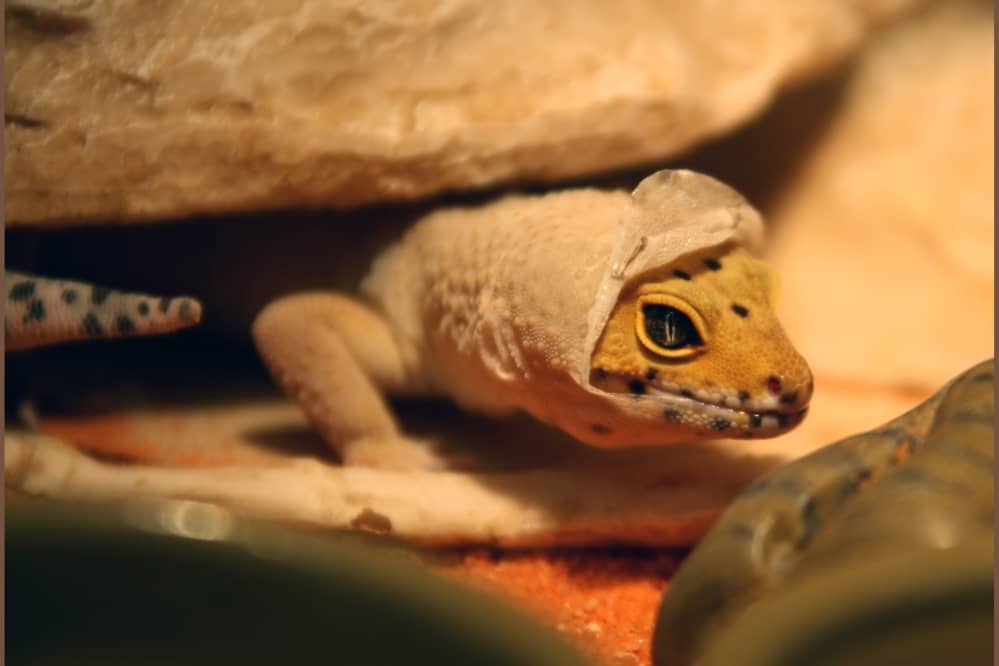Crested geckos are classified as reptiles, but they share the characteristics of amphibians and thus like cooler environments. Just like other lizards, they shed old skins as well. It is their natural characteristic that allows them to grow.
How often do crested geckos shed?
Crested geckos shed their skin every two weeks or sometimes weekly, but it all depends on the age, and you can also find your gecko shedding once a month. The shedding takes a day or two, starting with the skin becoming wrinkled, dry, and ashy. They shed their skin mostly at night when they feel safe and without distractions.
Changes during shedding
Several changes will take place as the gecko starts it’s shedding process. These changes will indicate that shedding is about to start and will be completed in a day or two. They should be left undisturbed during this time.
1. Skin color
During the shedding, you will notice that the skin color will become dull, more prominently around the nose, and there will be several whitish or creamy or milkfish-colored spots on the skin. These will indicate that shedding changes are taking place.
Some crested geckos will lose their skin around the bellies and feet as these are vigorously used by them. The removal of skin from these organs early on will indicate that crested gecko is about to shed in the next 24 hours.
3. Reduced activity
Your geckos’ activities will reduce, as they save energy for shedding. They will also reduce intake and minimize other activities like climbing and jumping. These are clear indicators that your gecko is close to shedding.
4. Reduced stickiness on the feet
Crested geckos tend to have reduced stickiness at their feet during shedding. It is because of loose skin they tend to have during shedding.
At what age does the crested gecko start to shed?
If you are a new keeper of the crested gecko or have adopted one, you might wonder when your little pet will start shedding. You may be surprised to learn that crested dragon starts to shed a week after they are hatched.
They have to shed regularly to keep up with their growing body which happens quite rapidly.
Helping your crested gecko shed
If you want to help your gecko to go through the process of shedding easily, take good care of its surroundings. The process of shedding is smooth as long as you are feeding a balanced diet.
Sometimes during shedding, geckos may face complexities that require human intervention. You can adopt few of these strategies to help them through the process.
1. Increase humidity
One of the reasons geckos face difficulty during shedding is because of less humidity in the surrounding. Increasing humidity in their vivarium a bit can help them through shedding process. If you use a fogger, run it longer to increase humidity for the gecko.
2. Add a shedding box
You can also use a shedding box to ease the shedding. Also, add damp towels and moss to help keep the moisture at an optimum level.
3. Give your gecko a sauna
If you find an incomplete shedding, you can help your gecko by removing it. You can do so by giving your gecko a sauna. You will need a plastic container and line it with a damp towel. Place your gecko inside and let it soak for about 20 minutes. Cover the container with a lid with a few holes, allowing geckos to breathe without losing moisture.
Conclusion
Shedding is a normal process for crested geckos. They shed once a week but this frequency can be varied among crested geckos. They shed at night, so you might not catch them shedding, but it does not mean your gecko doesn’t. Geckos normally don’t need any assistance during shedding but if you notice incomplete shedding, you can help your pet. In case of any abnormality, consulting a vet is your best option.

